Dynamic Seating: a history lesson
Michelle L. Lange, OTR/L, ABDA, ATP/SMS
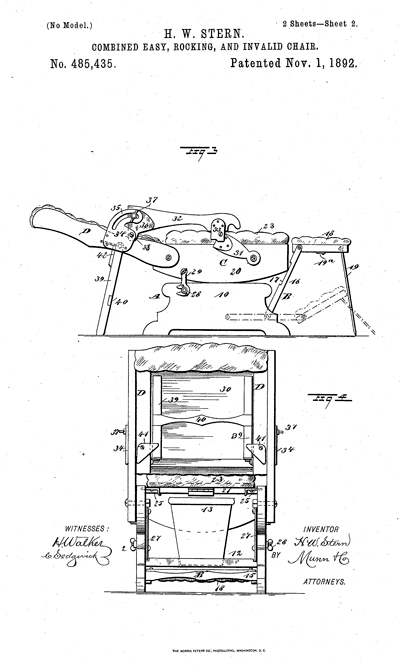
1892 Combined Easy, Rocking, and Invalid Chair
Dynamic seating options are much more readily available now than a number of years ago. Speaking for myself, we were trying homemade solutions many years ago, before commercially available options were readily available.
What were the first dynamic designs?
Various designs have been proposed and even patented over the years. Some of these designs were for a stationary chair but incorporated dynamic features that responded to client forces and movement. Other designs were specific to wheelchairs – either providing a rocking movement or changing the seated angles in response to client movement.
In 1892, nearly 130 years ago, Harris Wolf Stern of La Salle, IL was approved for a patent for “Combined Easy, Rocking, and Invalid Chair” (No. 485,435). He constructed a chair to “be utilized as a reclining-chair, a rocking-chair, or a chair for use in nursing the sick, as occasion may demand.” This invention was not designed for use on a wheelchair but was perhaps the first attempt at providing chair movement in response to client forces and movement.
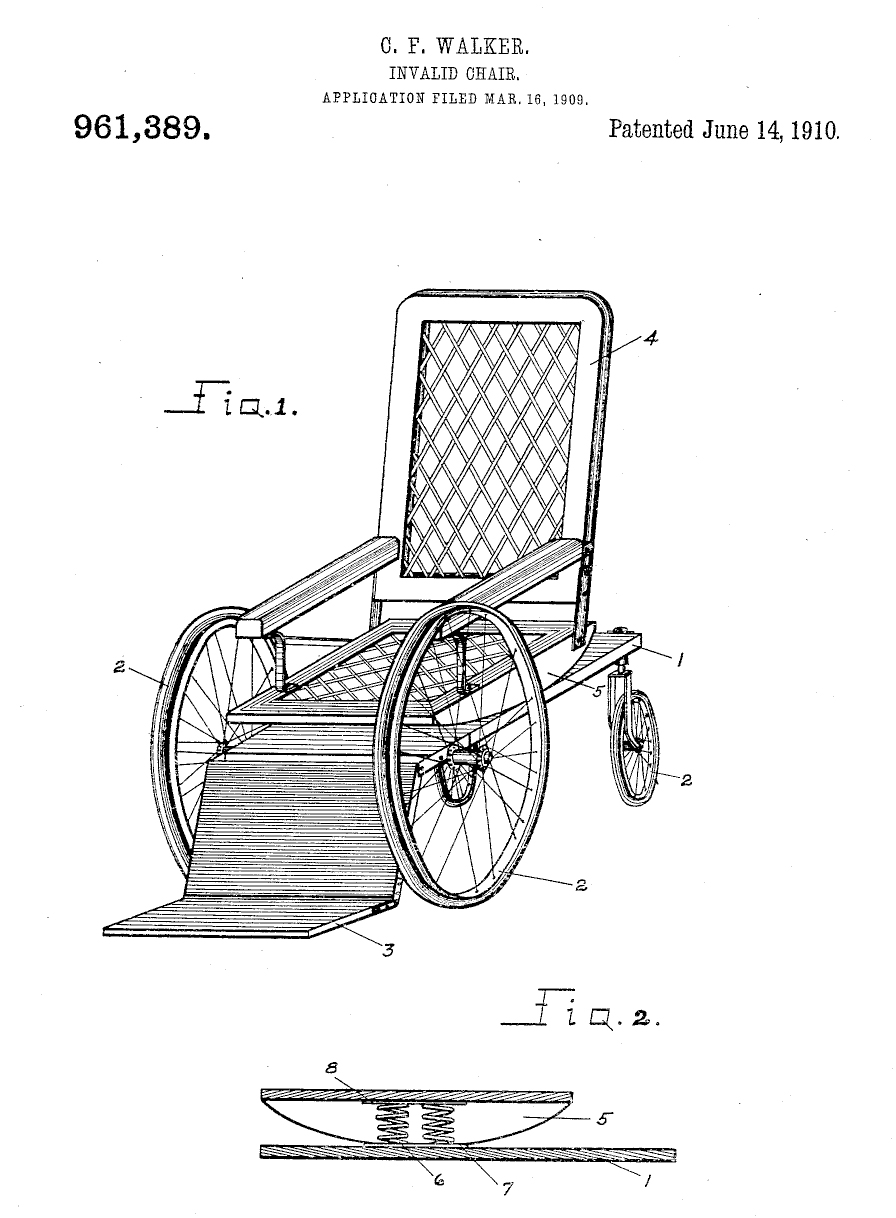
1910 Invalid-Chair
In 1910, Charles Francis Walker was approved for a patent for the Invalid-Chair (No. 961,389). While also no longer an acceptable name, this
design included springs to allow the client to rock. The patent listed the purpose as “giving a more comfortable chair and permit a rocking motion which will overcome the fatigue and ache occasioned by sitting in a straight and rigid chair.” The chair moved in response to client movement. Although dynamic seating design has changed tremendously, these goals remain relevant.
In 1931, Wenn and Biship secured a patent for a Vehicle Seat Adjustor (No. 1,822,427). Some of the design concepts are similar to those found in dynamic seating. The motor vehicle industry has had a major impact on dynamic seating design.
In 1933, Marcel Breuer of Zurich, Switzerland submitted a patent for a Spring Seat (No. 2,084,310). This was designed to move in response to movement / force of the occupant. While not designed for a wheelchair, office furniture design has also had a major impact on dynamic seating design.
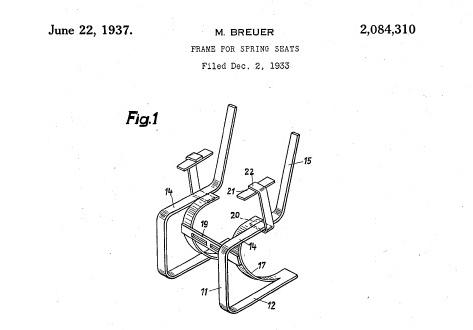
1933 Spring Seat
Other patents were filed over the years, including a Rocking Wheelchair in 1968 (Louise Kiel, Patent No. 3,415,531) which was designed to prevent posterior tipping (from the client rocking in a standard static wheelchair). This design also added brakes so the chair would not roll as the client rocked. The following year, Lewis and Alice Secor were awarded a patent (No. 3,455,600) for a Rocking Wheel Chair, stating “The general therapeutic effects of rocking motion are well known. The shifting of weight in the action of rocking provides gentle exercise, assists circulation, and reduces fatigue.” We now have research that supports these ‘effects.’
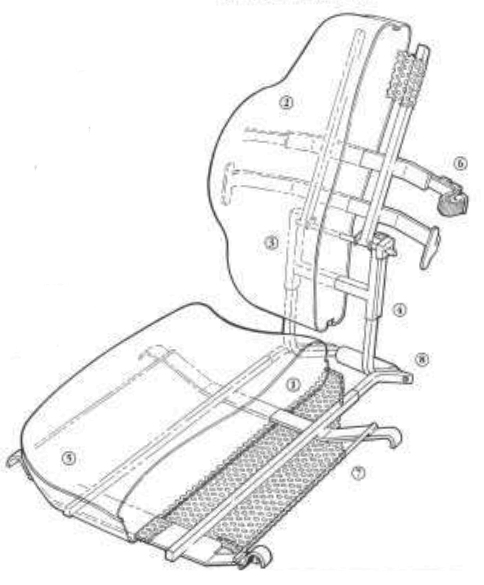
1989 EndoFlex by Pin Dot
The first wheelchair based dynamic system that was more widely available, to the best of my knowledge and research, was the EndoFlex by Pin Dot which came out in 1989. This Dynamic Back provided extension of the upper portion of the back at the lumbar area to “lean back, stretch, or shift weight. It’s even easier to propel your wheelchair.” The feature could be locked out. The height of the entire back could be changed to achieve the optimal height for this dynamic movement. The functional benefits, such as improved self-propulsion, have also since been supported through research.
Education Time: The Seating and Mobility Field Gets on Board
The first presentation I could find on the topic of Dynamic Seating was “A viable alternative for seating children with severe motor dysfunction”, presented by Kathy Riley and Barb Levy (now Barb Crume) in 1991 at the 7th annual International Seating Symposium. Here, they presented “A seating system to accommodate changes in position for a child with constant fluctuations in extension, flexion, and rotation.”
Next, Evans and Nelson presented in 1996 on “A dynamic solution to seating clients with fluctuating muscle tone” at RESNA in Salt Lake City. They studied a custom fabricated dynamic back. At the same conference, Orpwood presented on “A compliant seating system for a child with extensor spasms”. The next year, the International Seating Symposium included two sessions on Dynamic Seating. Connor, in “A bit of freedom for full-body extensor thrust: A non-static positioning approach” found improvements in function, demeanor, and reduced repairs using a dynamic back. Ault, Girardi, and Henry, in “Design of a dynamic seating system for clients with extensor spasms” found changes in hip extension force and duration using a dynamic back.
Commercially available Dynamic Seating options were emerging, research about this intervention was beginning, and educational information was being shared. Dynamic Seating had moved from design and patents to the spotlight! By 2001, the International Seating Symposium State of the Science conference included Dynamic Seating interventions and research.
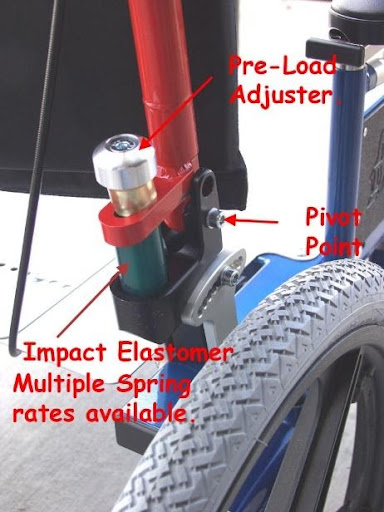
Early version of the Degage Dynamic Rocker Back, 2007
The Field Expands
In 2001, Dalthea Brown created a chart of the available dynamic components at that time. These included:
- PDG Bentley Wheelchair with a spring loaded back. This is still available at pdgmobility.com.
- Homecrest Rock ‘N Go Wheelchair with a rocking mechanism designed for elderly clients with dementia. This is still available at rockngo.com.
- RX Rocker Corporation RX “2001” Wheelchair for Kinetic Therapy which utilized a leaf spring for friction free motion. The patent was submitted by Robert Ayers and Ted Lee of Southern California in 1989.
- Freedom Designs Spectrum Wheelchair which utilized a free floating ring to attach the back panel of the seating system to the back canes.
- Miller’s Adaptive Technologies shock absorbing dynamic footrest device – a coil spring attached between the upper and lower footrest components. This is still available today.
- Miller’s Adaptive Technologies Gas Spring Dynamic Footrest, available in 3 levels of resistance and allowing downward extension (telescoping) of the footplate. A similar product is still available today.
In 2006, Greg Peek started Degage which eventually was renamed as Seating Dynamics. Starting with a dynamic back, he soon added dynamic footrests, as well as dynamic head support hardware.
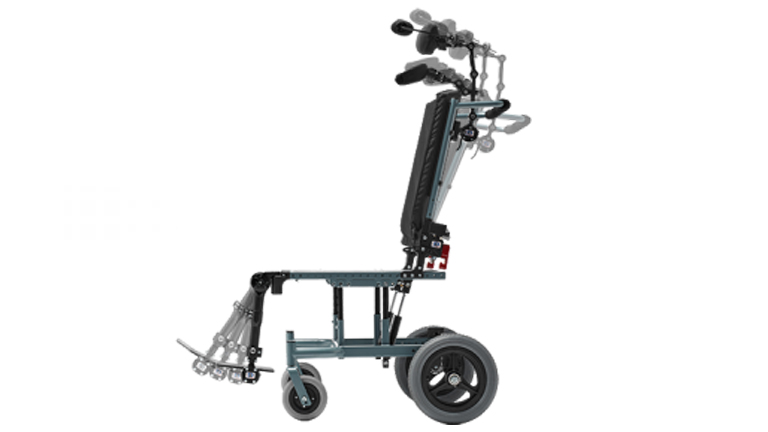
Today’s Seating Dynamics components: the Dynamic Head Support, Dynamic Rocker Back interface (DRBi) and Dynamic Footrest work separately or in concert.
Today
Fast forward to 2021 and Dynamic Seating interventions are available from a number of manufacturers, either as an integrated wheelchair base or as components which can be added on. Dynamic seating is offered on some adaptive seats, adaptive strollers, manual wheelchairs, and power wheelchairs. Some product options are country specific.
Looking back reminds me that the need for movement within a seating system – even in a vehicle or office chair – has been recognized for many years. Design has changed considerably, and these interventions are now a part of mainstream complex rehab technology. The original goals of these interventions have broadened and are now supported by research. It is exciting to be able to provide movement to the clients we work with, and to continue to educate on the topic, such as these two published pieces from 2021:
- Clinical Changes as a result of Dynamic Seating in a Young Adult with Cerebral Palsy, Disability and Rehabilitation: Assistive Technology Journal Vol 16. Issue 8
- RESNA Position on the Application of Dynamic Seating, Assistive Technology Journal
Future
I look forward to ongoing dynamic seating design improvements. In the United States, options are primarily designed to be added to a frame, rather than integrated. Product options must continue to be compatible with multiple mobility bases. We must continue to dream and stretch to meet client’s needs even better than we are now. Although we have research to support dynamic seating goals, we need more current and high-quality research studies. We also need ongoing education for this important intervention.
Finally, we must not be complacent about funding and related policies. Funding sources often dictate what equipment is recommended for a client. The seating and mobility team needs to make optimal and appropriate recommendations and continue to advocate for client needs. In doing so, we ultimately educate funding sources as to the necessity of specific equipment interventions. Let’s make room – for continued innovation. Just as a man from the Midwest saw a need in 1892 and set pencil to paper, we need to step back from our current level of busyness to carefully consider client need and possible solutions. After all, this process is what drew many of us to this field in the first place!
